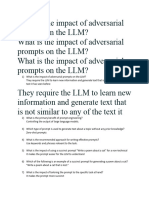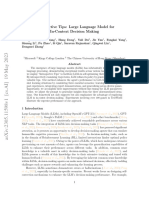Advanced Tech Stack for AI/ML
Practitioners
Deepening Your Deep Learning Knowledge
Since you're already familiar with TensorFlow and CNNs, it's worth expanding your deep
learning toolkit:
PyTorch would be valuable to learn alongside TensorFlow. Many research papers now
implement their work in PyTorch first, and it offers a more intuitive debugging experience
thanks to its dynamic computation graph. Understanding both frameworks gives you versatility
across different projects and teams.
Transformers architecture is revolutionizing not just NLP but also computer vision and
multimodal learning. While you have basic LLM knowledge, diving deeper into attention
mechanisms, positional encoding, and the specifics of models like BERT, GPT, and T5
architectures would be valuable.
Hugging Face ecosystem has become indispensable for working with modern models. Learning
to use their Transformers library for fine-tuning, inference, and optimization would significantly
accelerate your workflow. Their Datasets library provides standardized access to hundreds of
datasets, and their model hub makes sharing and discovering models much easier.
MLOps for Production Systems
Moving from experimentation to production requires specific tools:
Model serving frameworks like TorchServe, TensorFlow Serving, or FastAPI help deploy
models as reliable API endpoints. Understanding how to build robust, scalable inference services
is critical for real-world applications.
Feature stores like Feast or Tecton help manage features for machine learning, ensuring
consistency between training and inference environments. This is particularly important as
models become more complex.
Distributed training frameworks like Horovod, DeepSpeed, or PyTorch's Distributed Data
Parallel become necessary when working with large models that can't fit on a single GPU.
Understanding these tools will help you scale your training efficiently.
MLflow or Weights & Biases for experiment tracking is essential when juggling multiple model
architectures and hyperparameter configurations. These tools help maintain reproducibility and
track model performance.
�Advanced Data Engineering
Distributed data processing with tools like Apache Spark, Dask, or Ray allows you to scale
your data preprocessing and feature engineering pipelines. Understanding how to parallelize your
data workflows will save you time when working with large datasets.
Vector databases like Pinecone, Milvus, or Weaviate are becoming increasingly important for
semantic search, recommendation systems, and LLM applications. Learning to use these
effectively will help you build more sophisticated systems.
Streaming data processing with Kafka or Flink is valuable for real-time applications where
models need to react to data as it arrives.
AI Application Development
LangChain or LlamaIndex frameworks would be valuable to learn for building applications
with LLMs. These tools provide abstractions for document retrieval, prompting strategies, and
chaining multiple models together.
ONNX Runtime helps optimize models for deployment across different hardware and software
platforms, which is important for edge deployment or when working with constrained resources.
Gradio or Streamlit are useful for quickly building interactive demos and prototypes of your
models, which is valuable for stakeholder communication.
Cloud-Specific ML Services
Depending on your preferred cloud provider:
AWS SageMaker provides end-to-end ML tooling from data preparation to deployment and
monitoring.
Google Vertex AI offers similar capabilities in the Google Cloud ecosystem.
Azure ML provides Microsoft's suite of machine learning services.
Learning the specifics of at least one of these platforms will help you leverage cloud resources
effectively.
Specialized Areas
If you're interested in specific subfields:
�Reinforcement Learning: OpenAI's Gymnasium (formerly Gym), Stable Baselines3, and RLlib
provide environments and implementations for reinforcement learning algorithms.
Graph Neural Networks: Libraries like PyTorch Geometric or DGL (Deep Graph Library) are
essential for working with graph-structured data.
Computer Vision: Beyond CNNs, learning about YOLO architectures, vision transformers
(ViT), and segmentation models would expand your toolkit.
Generative AI: Understanding diffusion models (like Stable Diffusion), GANs, and VAEs
would be valuable for generative applications.
System Design and Optimization
CUDA programming for custom GPU kernels becomes valuable when optimizing specific
operations in your models.
Model optimization techniques like quantization, pruning, and knowledge distillation help
deploy models in resource-constrained environments.
Monitoring and observability tools like Prometheus, Grafana, or specialized ML observability
platforms help ensure your models continue to perform well in production.
What to Focus On First
Based on industry trends, I'd recommend prioritizing:
1. PyTorch - Its growing adoption makes it increasingly important alongside TensorFlow
2. Hugging Face ecosystem - The standard toolkit for working with modern models
3. MLOps tools (particularly experiment tracking and model serving) - These help move
from experiments to production
4. LangChain or LlamaIndex - Essential for building applications with LLMs



















































































